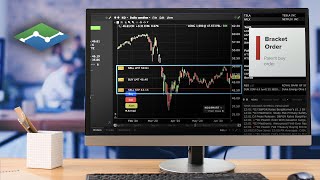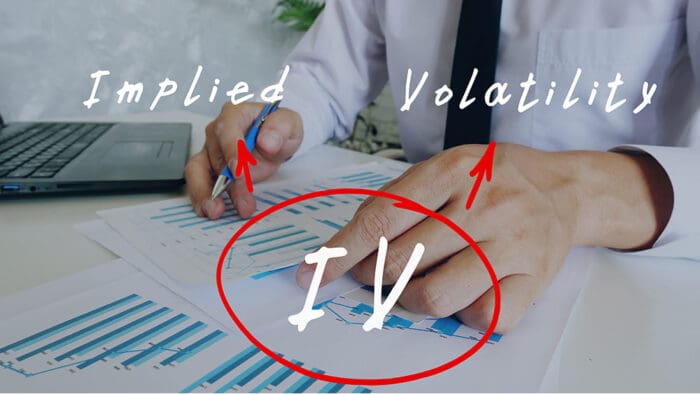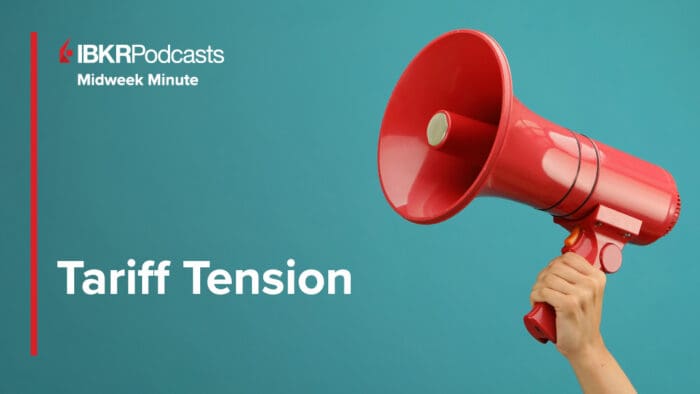The most commonly understood definition of trading on margin is borrowing cash to buy securities.
The concept of margin also ties into leverage. Leverage is what gives the investor the ability to increase their buying power in the marketplace. By entering into a margin loan agreement with their broker, they gain the ability to invest a higher dollar amount than the cash balance in their account.
For example, imagine that the investor deposits $2,000 into a margin account and would like to buy XYZ stock. Without margin, they are limited to buying $2,000 of XYZ. But by utilizing margin they may buy $4,000 of XYZ (assuming a 50% margin requirement).
If XYZ stock rises 25%, the $4,000 invested becomes worth $5,000, for a profit of $1,000. But since you put up only $2,000 in cash, your actual investment return is 50% ($1,000 profit / $2,000 original investment).
Short sellers are betting on a decline in the stock price by selling something that they do not own and then buying it back at a lower price.
In order to sell short, the investor must borrow shares from their broker. This involves risk, because they are required to return the shares at some point in the future by buying them back. If the shares are trading at a higher price than they sold them at, they will have a loss. If they are trading at a lower price, they will have a gain.
As the short seller, you are borrowing shares from another investor or a brokerage firm and selling it in the market.
Short selling is governed by Regulation T of the Federal Reserve Board in order to manage the risk associated with selling something that you do not own.
It is possible for the investor to end up owing more money than they initially received in the short sale if the market price of the shorted security increases after you sold it. If that happens, they may not be financially able to buy back and return the shares to the broker from which they were borrowed. Therefore, margin requirements act as a form of collateral in requiring the short seller to put up equity beyond the value of the short sale transaction.
A margin account also allows the brokerage firm to liquidate your position. This is part of the agreement that is signed when the margin account is created and increases the likelihood that they will return the shares before losses become too large and you become unable to return the shares.
A short sale transaction is like a mirror image of a long trade where margin is concerned.
Under Regulation T, short sales require a deposit equal to 150% of the value of the position at the time the short sale is executed. This 150% includes the full value of the short (100%), plus an additional margin requirement of 50% or half the value of the position.
The margin requirement for a long position is also 50%.
If the investor shorts $20,000 of XYZ, they would be required to put up the $20,000 which comes from the short sale plus an additional $10,000, for a total of $30,000. $30,000 is their initial margin requirement. After the position is created, they will be transitioned to a maintenance margin requirement, which is lower. The maintenance margin requirement is the minimum equity requirement for their account and is meant to ensure that there is adequate equity to hold the XYZ short position, along with any other positions.
The investor’s maintenance level is based on the current market price of the security, and not on the initial price at which the security was sold short.
The maintenance margin requirement on short sales depends on the price and quality of the stock, since these determine the risk associated with the short position.
For example, blue chip stocks may have substantially lower maintenance margin requirements than speculative small-cap stocks.
Rehypothecation
Margin requirements on a short sale can also be fulfilled with eligible securities in the investor’s account. In a margin account, securities are automatically pledged as collateral to meet the margin requirements of the short sale, typically as an additional 50% of the value of the transaction.
These securities are pledged to the lender of the margin loan in their account. In this case, the lender would be your broker.
The broker then uses the securities as a pledge for the margin on their own margin account or as backing for a loan with a bank.
Again, it’s important to be aware of the risks. If the investor is unable to meet their loan obligations, their broker has the right to liquidate the investor’s assets to bring the account into margin compliance.
In this video, we reviewed the mechanics of margin trading for a short sale including:
- Review of margin definitions
- Reminder that short sales can only be executed in a margin account
- Margin requirements of a short sale
- Rehypothecation













If the short sepl stocks increase in price, would the maintenance margin increase also? Let say I short sell the stock when they are $5000 , initial margin $7500 and maintenance margin $6500. What happens when those stock increase to $8000. Assume that my account have $20000 cash. Will it margin call?
Hi KT, thank you for reaching out. You can enter the symbol and USD value of your equities portfolio in the Stock Margin Calculator to calculate your approximate available margin for stocks and ETFs. We hope this helps!
If I had $25000 in my account and I just want to use $2000 for a short position can I use my own funds as collateral? Or does it always have to be in a margin account? Is there anyway to short sell without a margin account?
Hello JC, thank you for reaching out. You can use the Stock Margin Calculator to calculate your approximate available margin for stocks and ETFs. As selling short involves borrowing (of stock rather than cash) and poses unlimited risk (as there is no limit as to how high the stock price may increase when the position is eventually closed), a “Margin” type account is a prerequisite to entering orders to sell short. If you maintain a “Cash” type account which doesn’t allow such borrowing and wish to request an upgrade to a “Margin” type, please log in to Client Portal and select the User menu (head and shoulders icon in the top right corner) followed by Settings. Under Account Settings find the Account Configuration section, click Account Type to request an upgrade from Cash to Margin then click on Continue and complete the steps presented. We hope this helps!
Does margin collateral for a short sale need to be in the form of cash? Or can I use securities in my account as collateral , equal to their cash value? In other words is it possible to take out a short position without any cash in my account? Is it preferable to use cash or securities as collateral?
Hello Jeff, thank you for reaching out. Please use the Margin Requirements Wizard to view Margin Requirements specific to you:
https://www.interactivebrokers.com/en/trading/margin-requirements.php
We hope this helps!
At minute 4:30 in the video it talks about using securities in the account (ie rather than cash) as margin collateral for a short sell, ” at an additional 50% of the value of the transaction” . What does this mean exactly?
Hello, thank you for reaching out. You can view this FAQ for more information about using securities as margin collateral at IBKR: https://www.ibkr.com/faq?id=47453002
We appreciate your engagement. Please reach back out if you have any more questions!
when I short a stock, I will pay borrow cost of the stock. Is there any other cost besides borrow cost? And my cash will increase. Do I own interest for the increased cash due to short sell?
Hello, thank you for reaching out. When you short a stock, the actual borrow costs are not incurred until the trade settles, which is typically 2 business days after the trade date (T+2 for US stocks). Prior to shorting a stock, you can estimate the borrow costs using tools such as:
The Shortable column in TWS shows the number of shares available to short and the projected borrow rate. https://www.ibkr.com/faq?id=28220751
The SLB Rates tool in TWS allows you to enter a stock symbol and view the indicative borrow rates over the past 10 days.https://www.ibkr.com/faq?id=104941049
The borrow costs fluctuate daily based on supply and demand. The actual costs are determined at the end of the day once the necessary borrows have been sourced.
We hope this answers your question.
how do i check if 1 stock s eligible security for margin requirement of shorting?
Hello, thank you for reaching out. Please view this FAQ to see if a stock is shortable on TWS: https://www.ibkr.com/faq?id=28220751
Please view this FAQ for information about the margin requirements for shorting stocks: https://www.ibkr.com/faq?id=23599318
We hope this helps!
Hallo , kann ich unmittelbar , nachdem ich eine US-Aktie geshortet habe ( durch Ausführung der Verkaufsorder) , auch wieder schließen ( durch eine Kauforder) ? oder gibt es hier zeitliche Vorgaben wie Mindesthaltedauer oder Bearbeitungszeit , die abgewartet werden muss ? Viele Grüße
Hallo, vielen Dank für Ihre Anfrage. Bitte sehen Sie sich unsere Website zur Free Riding Rule an: https://ibkr.info/article/3101 Sie können auch unseren Artikel zum Pattern Day Trader (PDT) überprüfen: https://www.ibkr.com/faq?id=23298902
If I short a future such as NQ, then my margin requirements are 150% of the current value. Assume I only have funds within in the account of 200% and the future rises beyond my total collateral. Will make me responsible for the losses beyond my collateral? And if so, how can I prevent defaulting?
How is short sell margin requirement determined? e.g. why certain stock margin requirement is 756% instead of 856%? Is there any formula behind this?
Thank you for reaching out. Please review the margin requirement for shorting stocks here: https://www.interactivebrokers.com/faq?id=23599318
Hi, I am currently trading with another brokerage firm. Do you allow short-sell of non-marginable securities. If yes, then could a user place the orders by themselves, or your brokerage firm should be contacted for placing those orders?
Thank you for reaching out. In TWS, you can see what shares are shortable. After logging in, enter the desired security into the watchlist. Then you can right click a column at the top, click “Insert Column” > “Shortable Shares”. This will show you the number of shortable shares available.
We hope this answers your question!
When I short sell stocks say valued 10k USD. Can I use the cash proceed from the 10k USD to purchase other stocks? Essentially a long short position? What kind of account would enable this ability?
Thank you for reaching out. No, it is not possible to use the cash proceeds from a short sale to purchase other stocks. When you short sell a stock, the cash received is credited to your account balance, but it must be posted as collateral to secure the return of the borrowed shares. This cash is excluded when determining if a margin loan exists. As selling short involves borrowing (of stock rather than cash) and poses unlimited risk (as there is no limit as to how high the stock price may increase when the position is eventually closed), a “Margin” type account is a prerequisite to entering orders to sell short. Please review this FAQ for more information:
https://www.interactivebrokers.com/faq?id=25484924
We hope this information is helpful!
If I use margin, say borrow 20k USD. Since the rate is charged daily, if I proceed with borrowing, can I only borrow for say 5 days and return the borrowed fund and only pay 5 days of margin/borrowing cost?
Thank you for reaching out. Yes, IBKR accrues interest daily and posts actual interest monthly on the third business day of the following month on the Activity Statement under the NAV section. When you borrow on margin, interest is charged daily on the outstanding loan balance. You can review more details on our website: https://spr.ly/IBKR_InterestProgramCampus
We hope this answers your question!
Assume my current maintenance margin is 3000(30%). If price of securities drops from 10k to 8k, would this maintenance margin amount change? 30%*8k? And If price increases from 10k to 12k, the new maintenance margin is 12k *30%?
Thank you for asking. Please review our margin rates and requirements on our website: https://spr.ly/CampusMarginRequirements
If I understand correctly, if I have $10,000 in my account, I can only short sell for a maximum value of $10,000 * 1.5 = $6,666.67? Does this mean that I can never use my entire capital for a short sale? Thank you in advance for your reply, Sincerely
Hello, thank you for reaching out. Short selling is a trading strategy where investors borrow shares and sell them, hoping to buy them back at a lower price in the future. Please view these FAQs for more information on the strategy and the impacts: https://www.interactivebrokers.com/faq?id=721371241
https://www.interactivebrokers.com/faq?id=699747955
Also, you can access our short sale cost calculator here: https://www.interactivebrokers.com/en/pricing/short-sale-cost.php?cid=bce605b0-49bd-41c6-8cf2-cdd85dbf9c90
We hope this helps!
Anonymous March 5, 2025 at 4:25 am If I understand correctly, if I have $10,000 in my account, I can only short sell for a maximum value of $10,000 * 1.5 = $6,666.67? Does this mean that I can never use my entire capital for a short sale? Thank you in advance for your reply, Sincerely
If i convert my cash account to margin account, can I switch it back to cash account? second question- if I have 200k USD in my cash account after switching to margin account, i just use this capital only to short sell a stock , is it still using a margin?
Hello, thank you for asking. Yes, it is possible to convert your account type back to a cash account. However, after downgrading to a Cash account, market regulations require a waiting period of 30 days before your account becomes eligible for a Margin account again. Also, short selling requires a margin account and would not be allowed in a Cash account. Please view this FAQ for more information: https://www.interactivebrokers.com/faq?id=40340296
We hope this helps!